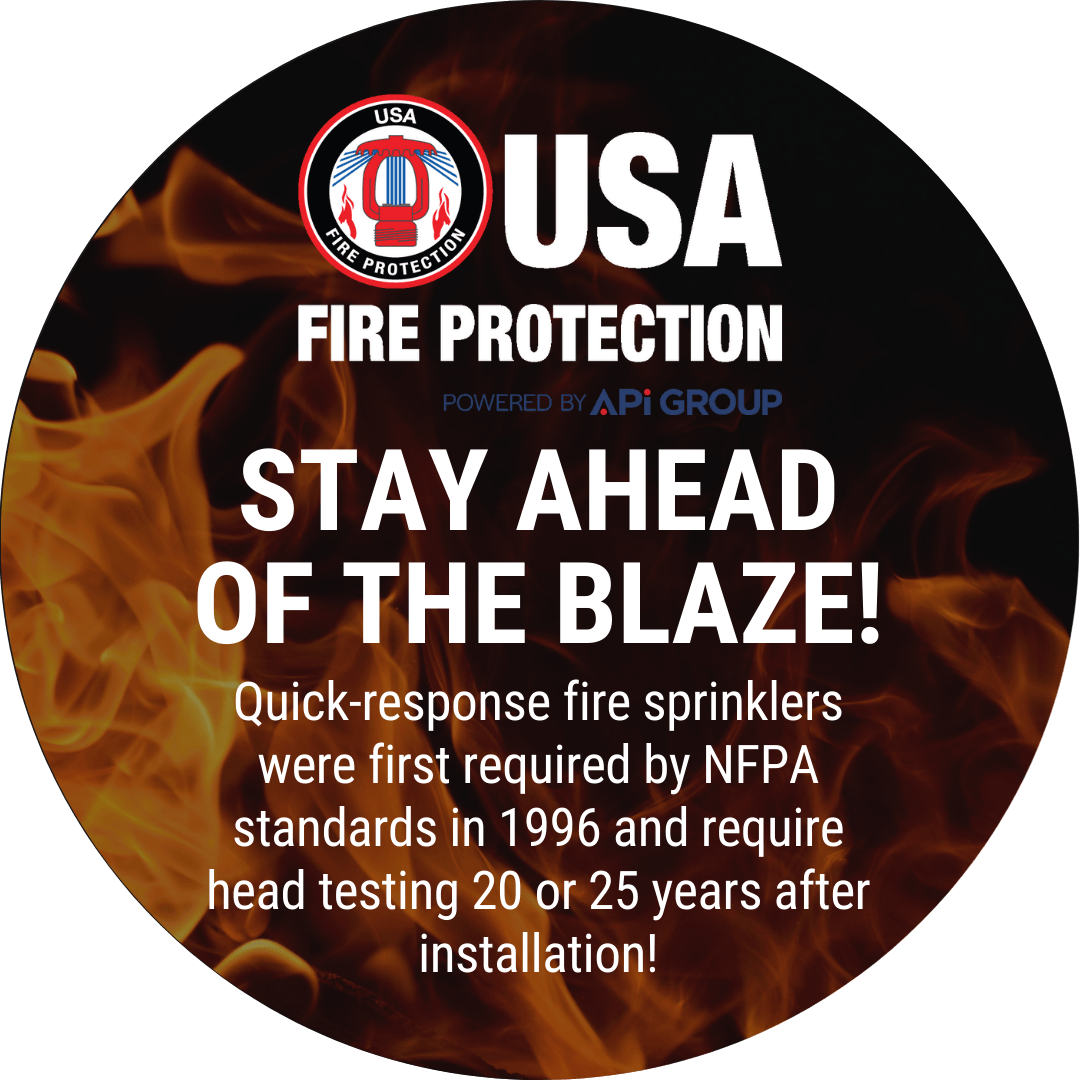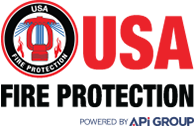Quick Response Sprinkler Testing
In the mid-1990s, a groundbreaking type of fire sprinkler was introduced into the industry: the quick response (QR) fire sprinkler. In fact, in 1996, the NFPA 13 standard began requiring quick response or other fast-response fire sprinklers in new systems installed in light-hazard occupancies. These sprinklers, sometimes referred to as fast response sprinklers, were designed with a focus on life-saving features. They quickly became the primary choice for buildings such as schools, office buildings, and assisted-living facilities. Like all other fire and life safety systems, quick response sprinkler testing is required. This test helps ensure that the sprinklers are effective at protecting people and property from fire. Let’s dive deeper into this process.
How it Works
The only definitive way to know if a sprinkler head works is by forcing it to activate. However, sprinklers are single-use. This means that once a sprinkler activates, it must be replaced. Therefore, fire protection experts have developed a tried-and-true method to determine if a sprinkler system is operational. NFPA 25 outlines the fire sprinkler head testing process. This process involves removing a portion of the fire sprinklers in an area and sending them to a qualified laboratory for testing. The latest version of NFPA 25 stipulates that quick response fire sprinklers should be tested 20 or 25 years after installation (depending on your jurisdiction) and must be repeated every 10 years after the initial test. This is up from the previous requirement of 20 years after installation, indicating that QR sprinklers have proven to be reliable during testing.
The Testing Process
When it is time for your quick response fire sprinklers to be tested, our experts will gather and submit the appropriate sample of sprinkler heads to a qualified laboratory. Once at the laboratory, the sprinkler heads will first undergo a visual inspection to search for:
- Obvious leaks or damage
- Significant corrosion
- Loss of fluid in the bulb
- Presence of heavy dust, dirt, or other debris
- Application of aftermarket paint
Next, the lab will perform the plunge test to determine the sprinkler’s response time index (RTI). Check out how this process is performed in this video from Dyne USA, which does UL 199 sprinkler testing.
Generally, a new quick response fire sprinkler should have an RTI of 50 (meters-second)1/2 or less. A sprinkler fails the plunge test if it does not activate or if the RTI during testing is higher than the acceptable RTI value. Furthermore, if one sprinkler head in the sample group fails, NFPA 25 requires that every sprinkler in the area where the sample group was taken from be replaced. If the sprinklers pass, then only the heads taken for the sample group need to be replaced.
Fire sprinklers are very reliable, and with proper inspection, testing, and maintenance, can last decades without replacement. Whether you are looking for routine maintenance, regular inspections, or are due for your 25-year quick response sprinkler test, USA Fire Protection has you covered. Call 844-MYUSAFP (698-7237) or visit our website to get in touch with a member of our team today!
